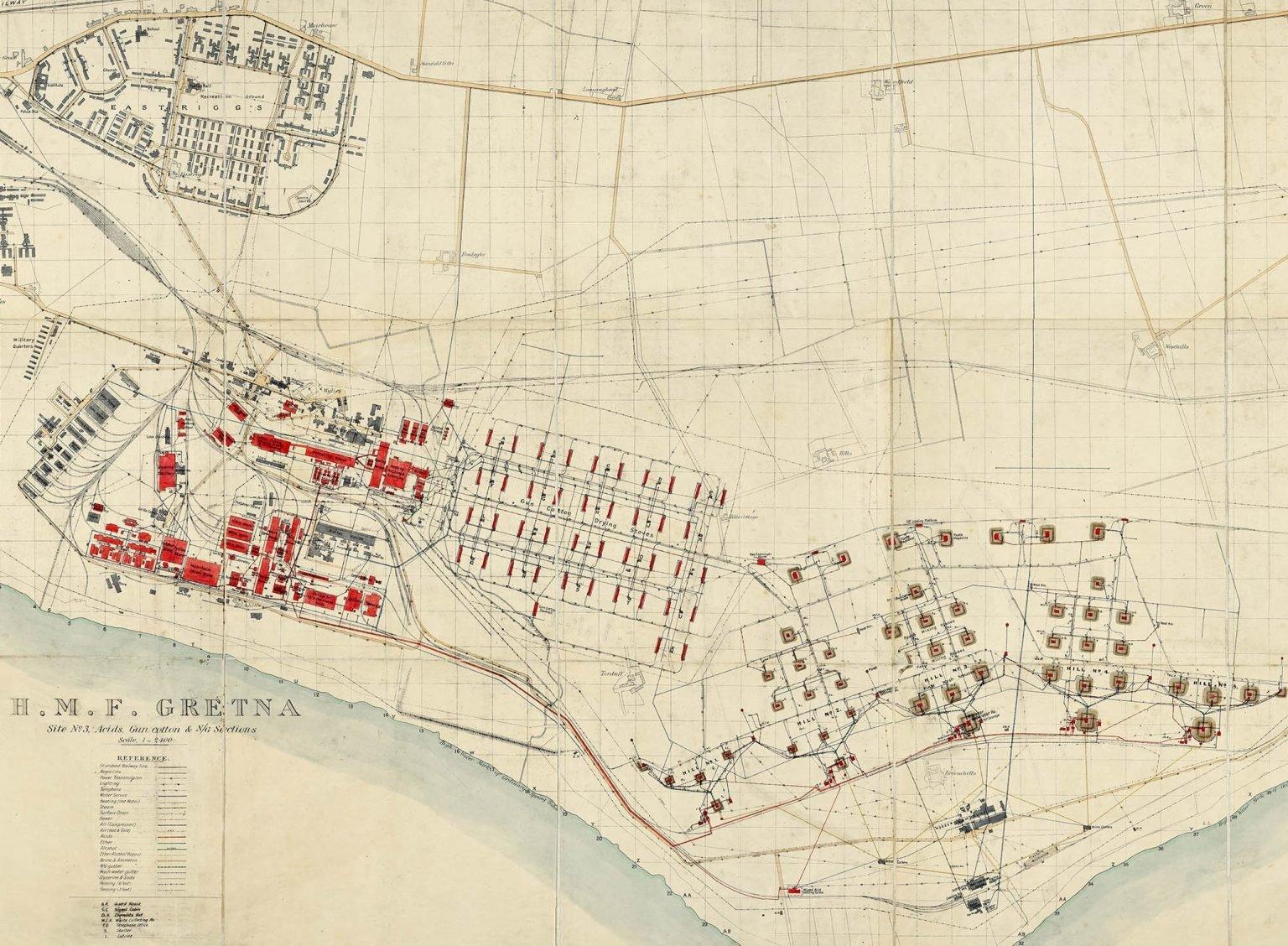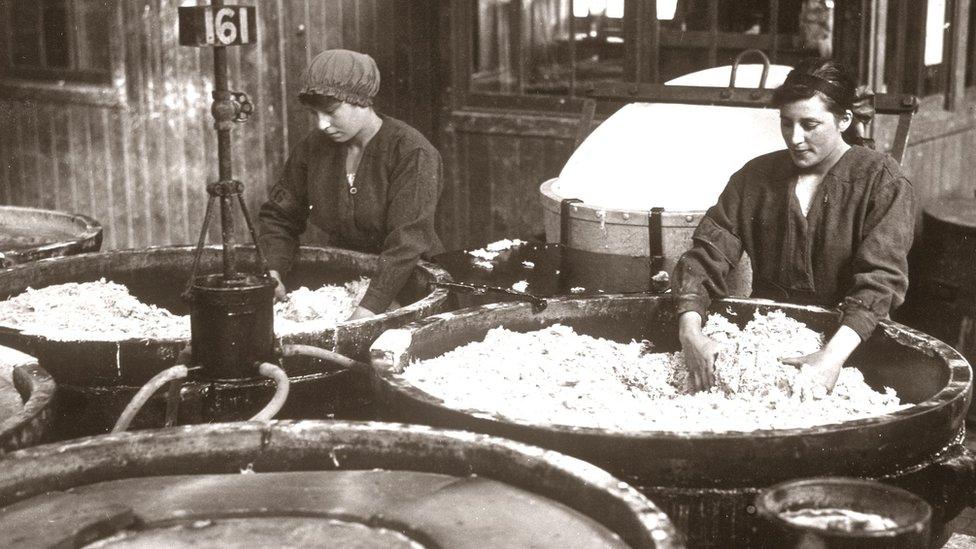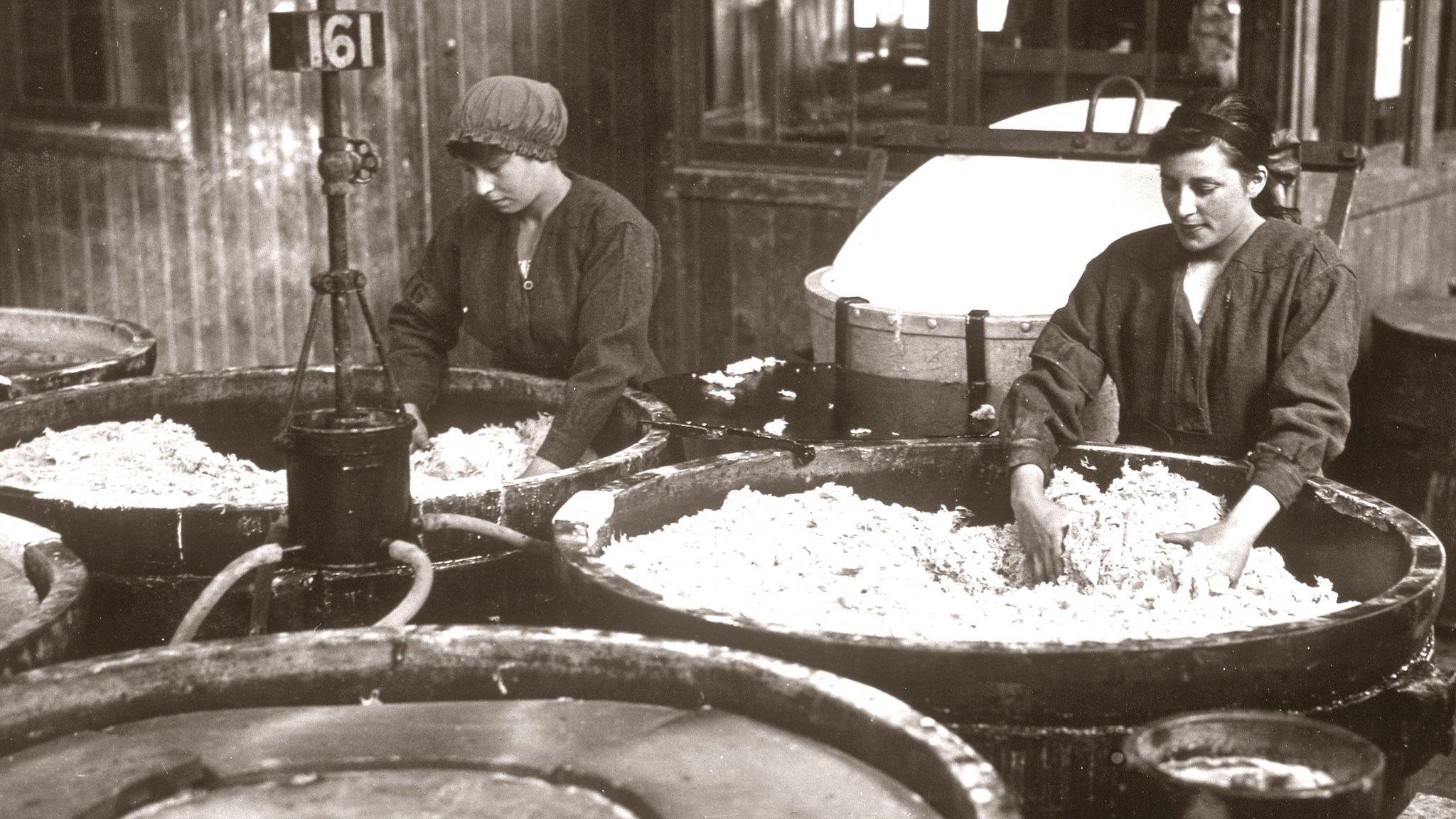Bid to safeguard HM Factory Gretna site for the future
- Published

HM Factory Gretna employed an estimated 30,000 workers at its peak
A bid is being made to help safeguard the site of the biggest munitions plant of World War One.
HM Factory Gretna stretched for miles across southern Scotland and was home to an estimated 30,000 workers.
Historic Environment Scotland (HES) is now looking at recognising the heritage significance of the site.
Emma Gilliland, curator at the Devil's Porridge Museum, said it would ensure the story of the factory could be told for years to come.
It was built in response to a shortage of fire power on the Western Front and ran from Dornock near Annan to Mossband in Cumbria.
It produced thousands of tonnes of cordite - the explosive paste which was dubbed the "devil's porridge".
HES is considering listing some of the few remaining buildings from the factory including its guardhouses.

The factory stretched for several miles across southern Scotland and into Cumbria
"They're looking at scheduling the site, but also listing some of the buildings," said Ms Gilliland.
"So listing - that refers to structures above the ground, and that protects them from any insensitive future development - whereas scheduling refers more to archaeological sites.
"Much of the site, it was dismantled after the First World War, so a lot of it no longer exists, but in terms of archaeology there's a lot of really interesting things there - some of which has been looked at, but there's a lot still to discover as well.
"So, in terms of significance, it's really, really important - essentially, it gives national importance to the site."
Ms Gilliland said the facility had played a very significant role in the conflict more than a century ago.
"It was the largest munitions factory in the world during World War One and by 1917 it was producing more than 1,000 tonnes of cordite a week," she said.
"So it had a massive impact upon the war effort."
'Quiet area'
She said it had also had a major effect on the south of Scotland.
"The site was nine miles long by two miles wide, and that was a relatively rural and quiet area," she said.
"For the factory, they then had to house 30,000 workers, and so the townships of Gretna and Eastriggs were built to house all of those workers.
"It completely changed the area."

The cordite produced at the factory was dubbed the "devil's porridge"
Consultation on the HES proposals runs until 3 November, external and Ms Gilliland recommended as many people as possible participate.
"The reports are really interesting, they give a lot of detail," she said.
"We want to preserve our heritage and we want to explore these stories more, we want to share it with people.
"Also, it might stop some very inappropriate, horrible housing development covering the top of it."
Related topics
- Published3 April 2021
